 |
 |
 |
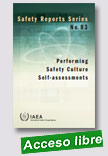 |
Performing Safety Culture Self-Assessments
IAEA Safety Reports Series, 2016, 157 p.
This publication provides practical guidance on how to conduct a safety culture self-assessment. The focus is on using such assessments as a learning opportunity for organizational growth and development rather than as a fault-finding or 'find and fix' exercise. The approach involves considerable engagement with all levels of the organization. Methods applied include document reviews, questionnaires, interviews, observations and focus groups. |
Besides the complexity and subtleties of safety culture it also describes how to avoid common pitfalls in analysing results. The information presented in this publication will be of interest to individuals engaged in assessing and improving safety culture.
Extraído de: http://www-pub.iaea.org/books/IAEABooks/10742/Performing-Safety-Culture-Self-Assessments
|
 |
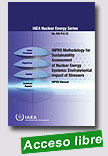 |
INPRO Methodology for Sustainability Assessment of Nuclear Energy Systems: Environmental Impact of Stressors
IAEA Nuclear Energy Series, 2016, 94 p.
This publication provides guidance on assessing of sustainability of a nuclear energy system (NES) in the area of environmental impact of stressors. The INPRO methodology is a comprehensive tool for the assessment of sustainability of an NES. Basic principles, user requirements and criteria have been defined in different areas of INPRO methodology. |
These include economics, infrastructure, waste management, proliferation resistance, environmental impact of stressors, environmental impact from depletion of resources, and safety of nuclear reactors and fuel cycle facilities. The ultimate goal of the application of the INPRO methodology is to check whether the assessed NES fulfils all the criteria, and hence the user requirements and basic principles, and therefore presents a system for a Member State that is sustainable in the long term.
Extraído de: http://www-pub.iaea.org/books/IAEABooks/10888/INPRO-Methodology-for-Sustainability-Assessment-of-Nuclear-Energy-Systems-Environmental-Impact-of-Stressors
|
 |
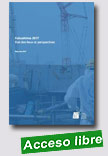 |
Fukushima 2017 - Etat des lieux et perspectives
Société Française d’Energie Nucléaire (SFEN), Mars 2017, 10 p.
Six ans après l’accident, la SFEN dresse un état des lieux de la situation sur place (santé des populations et des travailleurs du nucléaire, démantèlement des installations accidentées, décontamination des territoires) et présente les perspectives pour les années à venir.
|
Le 11 mars 2011 en début d’après-midi, environ 6 500 personnes, salariés de l’exploitant TEPCO et de ses entreprises partenaires, sont présentes sur le site de la centrale de Fukushima Daiichi[1] lorsque celle-ci est touchée d’un tremblement de terre suivi d’un tsunami. La centrale, gravement endommagée, a relâché d’importantes quantités d’effluents radioactifs, nécessitant l’évacuation de près de 146 000 habitants.
Six ans après l’accident, le plan d’action déployé par TEPCO, exploitant de la centrale, pour assainir le site, évacuer les combustibles nucléaires stockés dans les piscines des réacteurs accidentés, gérer l’eau contaminée et les déchets a progressé, même si beaucoup reste à faire. La récupération des combustibles nucléaires fondus (« coriums ») demandera de nombreuses années et sera d’autant plus complexe que la preuve d’un percement des cuves des trois réacteurs (1, 2 et 3) a été apportée et que les coriums semblent s’être déposés sur les radiers, sous les cuves des réacteurs.
Le programme de décontamination des territoires continu, permettant le redémarrage de l’activité économique et le retour progressif des populations. Dans les prochains mois, le retour des populations pourrait s’accélérer avec l’arrêt des aides pour les personnes déplacées issues de territoires décontaminés et rouverts.
Avec l’arrêt provisoire de ses réacteurs nucléaires[2], le Japon produit l’essentiel de son électricité (87%[3]) à partir d’énergies fossiles. La hausse des émissions de CO2 a même conduit le Japon à sortir de la trajectoire fixée par le Protocole de Kyoto[4].
Fin 2015 à la COP 21, le Japon a affirmé vouloir réduire de 26 % ses émissions de gaz à effet de serre en 2030 par rapport à 2013[5]. Pour parvenir à cet objectif, le gouvernement mise sur les énergies bas carbone. En 2030, les énergies renouvelables pourraient ainsi représenter jusqu’à 23 % du mix électrique et l’énergie nucléaire 21%.
Extraído de: http://www.sfen.org/fr/rgn/fukushima-2017-etat-des-lieux-et-perspectives
|
 |
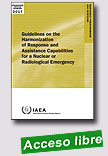 |
The objective of this publication is to provide guidelines to Member States and relevant international organizations on processes and arrangements that may be implemented as part of emergency preparedness and response (EPR) arrangements to assist in harmonizing national EPR capabilities, and international assistance when this is requested, so that the products of their response operations are comparable and compatible.
.
|
The publication provides guidelines on the format and content of the types of products that may be generated in the response to a nuclear or radiological emergency, including those generated through the provision of international assistance. The products described are intended to contribute to effective decision making in an emergency.
Application of these guidelines will support Member States in the implementation of
paragraph 5.94 of General Safety Requirements (GSR) Part 7 [1], which states:
“Arrangements shall be put in place and maintained for requesting and obtaining
international assistance from States or international organizations and for providing
assistance to States (either directly or through the IAEA) in preparedness and response for a nuclear or radiological emergency, on the basis of international instruments (e.g. the Assistance Convention), bilateral agreements or other mechanisms. These arrangements shall take due account of compatibility requirements for the capabilities to be obtained from and to be rendered to different States so as to ensure the usefulness of these capabilities.”
Extraído de: http://www-pub.iaea.org/books/IAEABooks/11159/Guidelines-on-the-Harmonization-of-Response-and-Assistance-Capabilities-for-a-Nuclear-or-Radiological-Emergency
utm_source=publication&utm_medium=offline&utm_term=
lrlowcarbon&utm_content=website&utm_campaign=techradarlowcarbon
|
 |
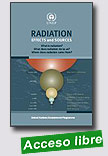 |
Radiation Effects and Sources
United Nations Environment Programme (UNEP), 2016, 68 p.
In 1955, the United Nations General Assembly established the Scientific Committee on the Effects of Atomic Radiation (UNSCEAR) to collect and evaluate information on the levels and effects of ionizing radiation. This was in response to concerns about the effects of ionizing radiation on human health and the environment as at that time fallout from atmospheric nuclear weapon tests was reaching people through air, water and food. |
UNSCEAR’s first report laid the scientific grounds on which, in 1963, the Partial Test Ban Treaty prohibiting atmospheric nuclear weapon testing was negotiated. This publication attempts to present objectively the latest knowledge on radiation levels and effects in a way that is accessible to the general reader. It is based on UNSCEAR’s scientific reports, which are used as the main source of information.
Extraído de: http://apps.unep.org/publications/index.php?option=com_pub&task=download&file=012202_en
|
 |
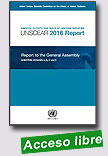
|
Sources, Effects and Risks of Ionizing Radiation - UNSCEAR 2016 Report
United Nations Scientific Committee on the Effects of Atomic Radiation (UNSCEAR), 2017, 512 p.
Since the establishment of the United Nations Scientific Committee on the Effects of Atomic Radiation by the General Assembly in its resolution 913 (X) of 3 December 1955, the mandate of the Committee has been to undertake broad assessments of the sources of ionizing radiation and its effects on human health and the environment. |
In pursuit of its mandate, the Committee thoroughly reviews and evaluates global and regional exposures to radiation. The Committee also evaluates evidence of radiation-induced health effects in exposed groups and advances in the understanding of the biological mechanisms by which radiation-induced effects on human health or on non-human biota can occur. Those assessments provide the scientific foundation used, inter alia, by the relevant agencies of the United Nations system in formulating international standards for the protection of the general public, workers and patients against ionizing radiation; those standards, in turn, are linked to important legal and regulatory instruments.
Exposure to ionizing radiation arises from naturally occurring sources (such as radiation from outer space and radon gas emanating from rocks in the Earth) and from sources with an artificial origin (such as medical diagnostic and therapeutic procedures; radioactive material resulting from nuclear weapons testing; energy generation, including by means of nuclear power; unplanned events such as the nuclear power plant accidents at Chernobyl in 1986 and that following the great east-Japan earthquake and tsunami of March 2011; and workplaces where there may be increased exposure to radiation from artificial or naturally occurring sources).
Extraído de: http://www.unscear.org/docs/publications/2016/UNSCEAR_2016_Report.pdf
|
 |
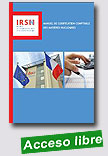 |
Manuel de codification comptable des matières nucléaires - Version 2016
Institut de Radioprotection et de Sûreté Nucléaire, 20/06/2016, 138 p.
Ouvrage de référence pour les comptables des matières nucléaires détenues dans les installations dont les quantités les soumettent au régime d’autorisation, le manuel de codification comptable intègre, dans cette nouvelle version, l’ensemble des évolutions métiers intervenues depuis sa dernière édition en 1995.
La comptabilité des matières constitue une composante essentielle de la protection et du contrôle des matières nucléaires détenues dans les installations.
|
Cette comptabilité, dans sa forme centralisée, est confiée de longue date à l’IRSN.
Pour que la comptabilité des matières nucléaires puisse être tenue correctement et efficacement, il est nécessaire que le référentiel comptable soit connu et partagé par tous les acteurs du domaine qu’ils soient sur des sites nucléaires de production ou dans des services plus centralisés.
Ce manuel recense et formalise les règles et les modalités techniques dédiées à la comptabilité des matières nucléaires applicables. Il constitue à la fois un référentiel technique et un outil pratique pour accompagner au quotidien le détenteur de l’autorisation dans l’application des obligations réglementaires requises dans ce domaine.
La refonte du manuel de codification est propice à un rappel des obligations légales liées à la comptabilité des matières nucléaires auxquelles doit répondre le titulaire de l’autorisation, dans le cadre des activités et matières nucléaires déclarées au ministre compétent.
Conçu dans un souci de praticité et de pédagogie, cette nouvelle version du manuel de codification décline les notions comptables, sous forme de fiches didactiques et synthétiques, illustrées chacune par un exemple caractéristique. Un mémento permet à l’utilisateur de retrouver aisément les informations et leurs codifications usuelles. Enfin, un lexique présenté à la fin du manuel explicite les différents termes comptables couramment employés.
Extraído de: http://www.irsn.fr/FR/expertise/rapports_expertise/surete/Pages/Manuel-codification-comptable-matieres-nucleaires.aspx#.WJxRUG8rK70
|
 |
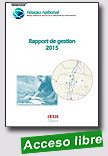 |
Rapport de gestion 2015 du réseau national de mesures de la radioactivité de l'environnement
Institut de Radioprotection et de Sûreté Nucléaire, 27/12/2016, 23 p.
Le rapport de gestion a pour objectif de présenter les évolutions de la réglementation du RNM, de son organisation, et du fonctionnement du comité de pilotage et des différents groupes de travail. Il présente également les évolutions réalisées sur le système d’information du RNM et le site internet de restitution des mesures de radioactivité au public. |
Six années après l’ouverture du site internet public du RNM (www.mesure-radioactivite.fr), le système d’information du RNM est stable et maintenu en condition opérationnelle.
En moyenne en 2015, plus de 25 000 mesures ont été transmises chaque mois au RNM par l’ensemble des producteurs, et à la fin de l’année 2015 la base de données contenait 1,8 million de mesures.
Cette année 2015 a été marquée par la production du Bilan de l’état radiologique de l’environnement français de juin 2011 à décembre 2014 et le démarrage de la prestation de développement du nouveau portail de restitution publique du RNM, avec pour objectif principal de mieux répondre aux attentes du grand public.
Extraído de: http://www.irsn.fr/FR/expertise/rapports_expertise/surveillance-environnement/Pages/Rapport-gestion-2015-reseau-national-mesures-radioactivite-environnement.aspx#.WJxR928rK70
|
 |
|
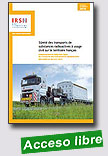
|
Sûreté des transports de substances radioactives à usage civil sur le territoire français en 2014 et 2015
Institut de Radioprotection et de Sûreté Nucléaire, 07/12/2016, 44 p.
L’IRSN publie son rapport sur la sûreté des transports de substances radioactives à usage civil sur le territoire français pour les années 2014 et 2015. Il est basé sur l’examen d’ensemble des événements significatifs survenus sur cette période à l’occasion des opérations de transport en France par voie routière, ferroviaire, fluviale ou aérienne de 980 000 colis chargés de substances radioactives.
En 2014 et 2015, respectivement 139 et 122 événements ont été déclarés, ce qui correspond à environ un événement déclaré pour 7 500 colis transportés.
|
Extraído de: http://www.irsn.fr/FR/expertise/rapports_expertise/surete/Pages/Surete-transport-substances-radioactives-civil-Bilan-2014-2015.aspx#.WJxQKm8rK70
|
 |
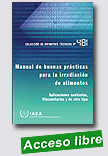 |
Manual de Buenas Prácticas para la Irradiación de Alimentos - Aplicaciones Sanitarias, Fitosanitarias y de otro Tipo
OIEA, 2017, 108 p.
En esta publicación se presentan los aspectos técnicos de la irradiación de alimentos y se aportan ejemplos de buenas prácticas de irradiación de alimentos
con fines sanitarios, fitosanitarios y de otra índole, con la finalidad de apoyar
a los operadores de instalaciones de irradiación de alimentos, a los productores
y comerciantes de alimentos y a los funcionarios públicos que intervienen en
la autorización o inspección de las instalaciones de irradiación donde se tratan
alimentos.
|
Las orientaciones que se proporcionan y las buenas prácticas que
se exponen en ellas, representan la opinión de expertos, pero no constituyen
recomendaciones formuladas sobre la base de un consenso de los Estados
Miembros.
Extraído de: http://www-pub.iaea.org/books/IAEABooks/11028/Manual-of-Good-Practice-in-Food-Irradiation
|
 |
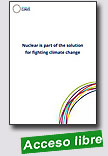 |
Nuclear is part of the solution for fighting climate change
United Nations Scientific Committee on the Effects of Atomic Nuclear for Climate (N4C), November 2016, 12 p.
We believe that nuclear energy is a key part of the solution for limiting climate change, and that: 1. The world must increase the deployment of all low-carbon energy sources, including nuclear energy, if it is to limit climate change while still meeting development goals;
|
2. The world needs to take urgent steps towards reducing greenhouse gas emissions. It cannot afford to wait for ‘advanced technologies’ or to prematurely close existing low carbon energy sources. Nuclear energy is a proven low carbon option, available today; 3. All countries have the right to choose nuclear energy in order to reduce greenhouse gases while meeting
their other energy objectives.
Extraído de:http://www.euronuclear.org/pdf/nuclear4climate_position_paper.pdf
|
 |
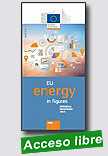 |
EU energy in figures - Estatistical Pocketbook 2016
European Commission, November 2016, 268 p.
The energy sector is one of the pillars of growth, competitiveness and development for modern economies. To keep up with the ongoing transformation of the energy sector in Europe, we need data that is accurate and up-to-date.
This publication provides an overview of the most relevant annual energyrelated statistics for the European Union as a whole and for each of its Member States.
|
The data contained in this pocketbook is drawn from several sources: from the European Commission’s services, from international organisations such as the European Environment Agency and the International Energy Agency and also from the European Commission’s estimates when other data is unavailable.
The publication is divided into five parts:
Part 1. Energy overview at global and EU levels.
Part 2. Main energy indicators, at EU and Member States levels.
Part 3. Socio-economic indicators in the EU.
Part 4. Impact of the energy sector on the environment.
Part 5. Country profiles – Main energy indicators.
Indicators have been calculated using the methodology established by the
European Commission – DG Energy. The appendices include a glossary and
methodological notes.
This publication was produced using the most recently available data.
Corrections and updates will be published at: http://ec.europa.eu/energy/en/
data-analysis/energy-statistical-pocketbook
.
Extraído de: https://ec.europa.eu/energy/sites/ener/files/publication/pocketbook_energy-2016_epub-final_final.pdf
|
 |
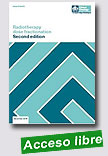 |
Radiotherapy dose fractionation, second edition
Royal College of Radiologists (UK), 2016, 136 p.
This updated edition of Radiotherapy dose fractionation reflects changes in radiotherapy practice over the past decade. It aims to recommend evidence-based radiotherapy treatment regimens and fractionation schedules and to present acceptable treatment options ranked according to the level of evidence available.
This document replaces the previous edition of Radiotherapy dose fractionation which has now been withdrawn.
For ease of use, the document can be downloaded by chapter or as a single pdf.
|
Extraído de: https://www.rcr.ac.uk/publication/radiotherapy-dose-fractionation-second-edition
Home-page: http://www-pub.iaea.org/books/IAEABooks/11141/Performance-of-Models-in-Radiological-Impact-Assessment-for-Normal-Operation
|
 |
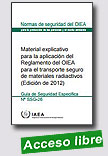 |
Material Explicativo para la Aplicación del Reglamento del OIEA para el Transporte Seguro de Materiales Radiactivos (Edición de 2012)
Colección de Normas de Seguridad del OIEA, 2016, 506 p.
En general el Reglamento de Transporte tiene por objeto suministrar
un nivel de seguridad adecuado y uniforme que se corresponda con el peligro
inherente que presenten los materiales radiactivos que sean transportados. Dentro
de lo posible, las características de seguridad deben ser incluidas en el diseño
del bulto. Al depositar la confianza primordial en el diseño y la preparación del
bulto, la necesidad de adoptar medidas especiales durante el transporte (es decir,
por parte del transportista) queda reducida al mínimo. Sin embargo, para cumplir
con los objetivos de seguridad se requieren algunos controles operacionales.
|
.
Extraído de: http://www-pub.iaea.org/books/IAEABooks/10902/Advisory-Material-for-the-IAEA-Regulations-for-the-Safe-Transport-of-Radioactive-Material-2012-Edition
|
 |
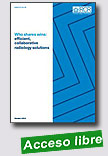 |
Who shares wins: efficient, collaborative radiology solutions
Royal College of Radiologists (UK), 2016, 32 p.
This document specifies what imaging departments should demand from RIS and PACS vendors to ensure their radiology information technology systems can function in the modern teleradiology environment in a vendor neutral way.
It will enable radiologists to have informed, standards-based discussions with potential suppliers, providing advice on exactly what radiologists need to ask for when specifying a modern RIS-PACS and network teleradiology platform.
|
To provide context and highlight the key points of the document, the RCR has produced an executive summary to accompany this publication.
.
Extraído de: https://www.rcr.ac.uk/publication/who-shares-wins-efficient-collaborative-radiology-solutions
Executive summary: https://www.rcr.ac.uk/sites/default/files/who_shares_wins_infographic.pdf
Report: https://www.rcr.ac.uk/system/files/publication/field_publication_files/rcr164_who-shares-wins.pdf
|
 |
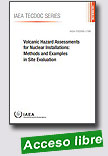 |
Volcanic Hazard Assessments for Nuclear Installations: Methods and Examples in Site Evaluation
IAEA TECDOC, 2016, 279 p.
The objective of this TECDOC is to provide information on detailed methodologies and examples in the application of volcanic hazard assessment to site evaluation for nuclear installations, thereby addressing the recomendations in Specific Safety Guide (SSG) 21. Although SSG-21 develops a logical framework for conducting a volcanic hazards assessment, this TECDOC demonstrates the practicability of evaluating the requirements in SSG-21 through a systematic volcanic hazards assessment.
|
The results of this hazard assessment can be used to derive the appropriate design bases and operational considerations for specific nuclear installations. Although detailed design bases for specific installations are not presented in this TECDOC, perspectives are provided on typical installation design capacities.
Extraído de: http://www-pub.iaea.org/books/IAEABooks/11063/Volcanic-Hazard-Assessments-for-Nuclear-Installations-Methods-and-Examples-in-Site-Evaluation |
| |
| |
|
|
| |
| |
|
|
| |
| |
|
|
| |
| |
|
|
|
